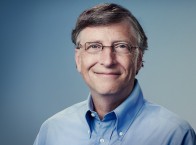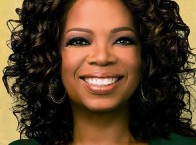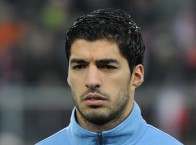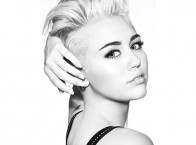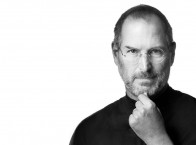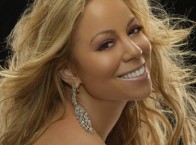Nicola Sturgeon, the fifth and current First Minister of Scotland, was ranked as the 45th most powerful woman in the world and 6th most powerful woman in the United Kingdom, by the Forbes magazine in the year 2018. Here are some interesting facts about the Scottish politician:
- She was born Nicola Ferguson Sturgeon on July 19, 1970, in Irvine, Scotland, to Robin Sturgeon an electrician and Joan Kerr Sturgeon a dental nurse. She is the eldest of three daughters.
- She completed her schooling from Dreghorn Primary School and Greenwood Academy before joining University of Glasgow, where she graduated with Bachelor of Laws in 1992. A year later she also completed her Diploma in Legal Practice.
- On completing her traineeship at McClure Naismith, Glasgow in 1995, Sturgeon joined Bell & Craig a firm of solicitors in Stirling and later worked at the Drumchapel Law Centre in Glasgow from 1997 until her election to the Parliament in 1999.
- She became a member of a Scottish National Party at a tender age of 16 years, after being inspired by then Prime Minister, Margaret Thatcher for all the wrong reason. She felt it was wrong for Scotland to be governed by a Tory government that we hadn’t elected.
- As an 18 year old she attended her first major political demo on Nelson Mandela’s 70th birthday in Glasgow, where the injustices were underlined. This solidified her desire as a young girl to change the world. She was also influenced by her school modern studies teacher Kelso.
- Sturgeon was very active member of Scottish National Association and took part in the Campaign for Nuclear Disarmament. As astudent’s representative at Glasgow University, she became their Youth Affairs Vice-Convener and Publicity Vice-Convener.
- At the age of 22 she was the youngest parliamentary candidate when she contested unsuccessfully for the Glasgow Shettleston constituency in the 1992 General Election on the Scottish National party ticket. Further she went without any success in the Cunninghame District Council in May 1992, Starthclyde Regional Council in 1994 and in the Glasgow City Council in 1995.
- In 1999 though she lost in the first Scottish Parliament Election as Scottish National Party candidate, she was elected as a member of the Scottish Parliament by virtue of being placed first in the SNP’s regional list for the Glasgow region. During the first term, she served as a member of the Shadow Cabinets of both Alex Salmond and John Swinney.
- For next five years from 1999 to 2004, with SNP in the opposition, she served as Shadow Minister in various cabinets. First she was with Children and Education before moving to Health and Community Care in 2000. From 2003 to 2004 she was Shadow Minister with Justice apart from being a member of Education, Culture and Sport Committee and the Health and Community Care Committee.
- In June 2004, following John Swinney resignation, Alex Salmond was elected as the leader on September 03, 2004and Sturgeon as his deputy. As Salmond was still a Member of Parliament in the House of Commons, Sturgeon led the SNP in the Scottish Parliament.
- As a leader of the SNP in the Scottish Parliament, she became high-profile figure gaining a reputation for her vigorous attack on First Minister Jack McConnell of the Labour Party over decision to replace the Trident nuclear weapon system and the SNP’s plan to replace council tax with a local income tax.
- In the 2007 election the SNP won with slenderest of margin and formed a minority government. Sturgeon was appointed as the Deputy First Minister and Cabinet Secretary for Health and Wellbeing after she was elected from Glasgow Govan defeating Gordon Jackson.
- In her early days, she had the reputation of being too serious and some called her ‘nippy sweetie,’ Glasgow slang for an irritable person. She is now judged as being a combative, inspiring, sincere, calm and determined character.
- She became known at home for scrapping prescription charges and reversing Accident &Emergency closures. She was later thrust into the international public eye during the global swine flu pandemic in 2009, giving regular and incisive press briefings and updates after the first UK cases were confirmed.
- After the SNP’s landslide victory in 2011 election, Sturgeon was moved from health secretary to a new role overseeing the independence referendum. She was also appointed as cabinet secretary for infrastructure, investment and Cities.
- Following the rejection of Scottish Referendum on September 19, 2014, Alex Salmond resigned as First Minister and Leader of the SNP. Sturgeon has made little secret of her desire to be Scotland’s first female leader and received huge support from the SNP hierarchy.
- As a sole nominee for the post of leader, she was formally appointed Scottish National Party first female leader on September 14, 2014, with Hosie as her depute. In her first speech as leader, Sturgeon said that it was ‘privilege of her life’ to lead the party she joined as a teenager.
- On November 20, 2014, Sturgeon was officially sworn in as Scotland’s First Minister, making her the fifth person and became first female leader to hold the top job. She was appointed to the Privy Council of the United Kingdom and therefore granted the style ‘The Right Honorable.’
- Sturgeon led SNP to a historic landslide victory in Scotland, winning 56 of 59 seats in the 2015 General Election. Following her victory she said ‘the government at Westminster cannot ignore what has happened in Scotland, people have voted overwhelmingly for Scotland’s voice to be heard and for an end to austerity.
- In April 2015, it was alleged she confide to the French ambassador Sylvie Bermann of her preference for David Cameron’s Tories to win the election in preference to Labour, in contrast to her publicly stated opposition to a Conservative Government. The memo was quickly and categorically denied by both Sturgeon and French consulate.
- Sturgeon’s SNP won its third consecutive Holyrood election on May 05, 2016, but finished two seats short of an overall majority. She was formally nominated for a second term on May 17, defeating Lib Dem leader Willie Rennie by a vote of 63 to 5, with 59 members abstaining. In her response to Rennie’s colorful campaign, she had joked that if the vote were tied, they would race down a ‘giant inflatable slide’ to decide who got the job.
- In September 2017, in view of Brexit, Sturgeon demanded greater power of the Scottish Parliament, arguing that Brexit is threatening Scotland’s devolution settlement. She wants to see spirit of consensus to boost Holyrood’s power in areas such as employment, immigration and trade.
- In January 2019, she referred herself to an independent ministerial ethics body over claims she broke the ministerial code with respect to a sexual harassment case concerning allegations against Alex Salmond.
- Sturgeon has committed to strengthening links between Scotland and number of Europe, North American, Asia and African countries to promote business and trade. She also undertook a visit to Brussels to meet the President of the European Commission and of the European Parliament to discuss Scotland’s interest aftermath of Brexit vote.
- In run up to United States presidential election 2016, she publicly backed Hillary Clinton’s candidature and said victory would be shared by women around the world. Sturgeon had been highly critical of Donald Trump language relating to sexism and misogyny and had also stripped of his ambassadorial role for Scottish business in response to his views of an outright ban of Muslims from entering the United States.
- Sturgeon has backed the right of the Catalan government to hold an independence referendum in 2017 and had highlighted ‘the shining example’ of Edinburgh Agreement between Scottish and British government. The Government of Spain was highly critical of Sturgeon, claiming she has totally misunderstood the situation in Spain and Catalonia.
- She has strongly supported women’s rights and gender equality. As one of three women leaders of main political parties in Scotland, she announced her cabinet with equal gender balance during her first term. As a self-described feminist, she hailed Scottish feminist Alisa McKay as one of her inspiration.
- Sturgeon was awarded the ‘Scottish Politician of the Year Award,’ in 2008, 2012, 2014, and 2015. She also won the ‘Donald Dewar Debater of the Year Award,’ for the year 2004, 2008, and 2011, at the same event organized by The Herald newspaper.
- In 2015, she had topped BBC Radio 4’s Women’s Hour power list of top 10 influencers featuring women from the world of politics, fashion, journalism, business and entertainment. She was described as ‘the women of the moment.’
- She is married to Peter Murrell, the current chief executive of the SNP, since July 16, 2010 after being in long relationship since 2003. The couple has no children after a miscarriage in 2011.
- Nicola Sturgeon Net Worth: $2.47 Million

 Share on Facebook
Share on Facebook











